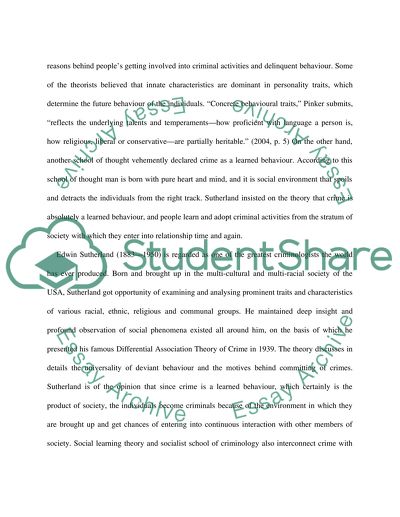Cite this document
(“Critically evaluate the application of Edwin Sutherlands theory of Essay”, n.d.)
Critically evaluate the application of Edwin Sutherlands theory of Essay. Retrieved from https://studentshare.org/miscellaneous/1568779-critically-evaluate-the-application-of-edwin-sutherlands-theory-of-differential-association-to-contemporary-criminology
Critically evaluate the application of Edwin Sutherlands theory of Essay. Retrieved from https://studentshare.org/miscellaneous/1568779-critically-evaluate-the-application-of-edwin-sutherlands-theory-of-differential-association-to-contemporary-criminology
(Critically Evaluate the Application of Edwin Sutherlands Theory of Essay)
Critically Evaluate the Application of Edwin Sutherlands Theory of Essay. https://studentshare.org/miscellaneous/1568779-critically-evaluate-the-application-of-edwin-sutherlands-theory-of-differential-association-to-contemporary-criminology.
Critically Evaluate the Application of Edwin Sutherlands Theory of Essay. https://studentshare.org/miscellaneous/1568779-critically-evaluate-the-application-of-edwin-sutherlands-theory-of-differential-association-to-contemporary-criminology.
“Critically Evaluate the Application of Edwin Sutherlands Theory of Essay”, n.d. https://studentshare.org/miscellaneous/1568779-critically-evaluate-the-application-of-edwin-sutherlands-theory-of-differential-association-to-contemporary-criminology.


